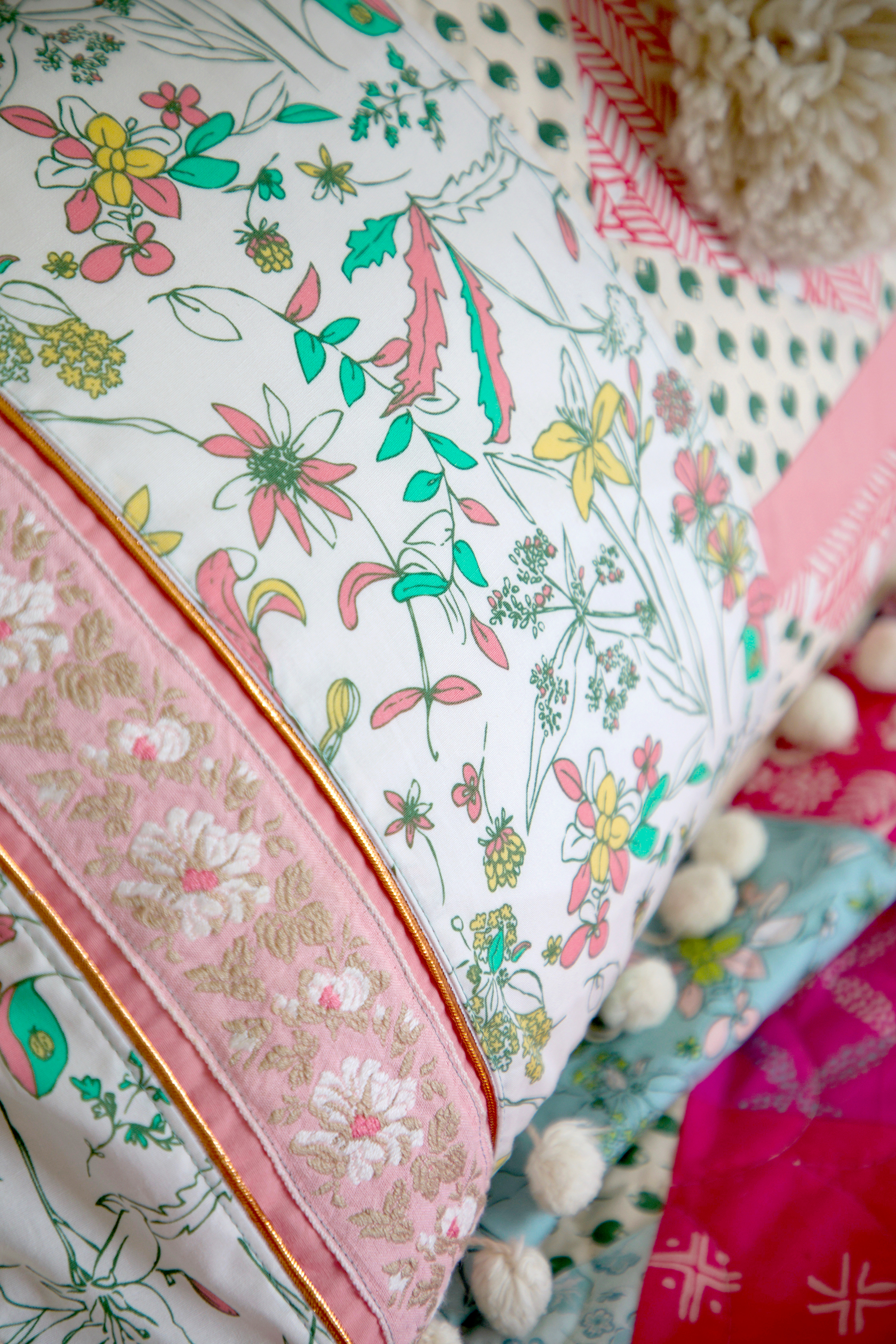Improv Boho Pillow
To continuing my marathon series of home decor pillows sewn with my Signature fabrics for Art Gallery Fabrics, today I'm posting about an improv patchwork pillow.
I wanted a long, bolster-type pillow for my Soho-style bedroom photo shoot and had a 14'' x 28'' pillow form that would be just perfect.
I used prints from my Signature Foliar color way and first made the four 3-1/2'' x 6-1/2'' Flying Geese units from:
- One 7-1/2" square Venture Forward
- Four 4-1/8" squares Tender Arrangement
See my No-Waste Flying Geese tutorial here.
The Flying Geese units didn't quite make the 14-1/2'' width I was needing for my pillow so I added two 1-1/2'' x 6-1/2'' strips of Art Gallery Fabrics PE-411 Pink Quartz Pure Elements solids to get it up to size.
Improvising as I went, I made two 3'' x 14-1/2'' strips of vintage trim embellished Pink Quartz and cut the following of Untamed Beauty Daybreak: two 6-1/2'' x 14-1/2'' strips and two 3'' x 14-1/2'' strips. When assembling the sections I added in the vintage copper colored piping for a little bling.
Once the pillow front was pieced I basted reclaimed vintage pompoms to the raw edge before assembling the pillow.
Since this pillow front only had enough seam allowance for a 1/4'' seam allowance I decided to finish the back with an envelope pillow backing. There's a terrific tutorial over at the Sew Mama Sew blog and she even has the cut sizes for the different sizes of pillows in a handy-dandy chart!
After my pillow was all sewn I thought it needed just one more fun element and hand sewed a giant pompom to the center of the pillow (before inserting the pillow form).
Next, and final installment in this pillow series I'll be sharing how to make a Yo-yo pillow. If you've missed the first two pillow tutorials, take a look at my Chenille Pillow with Hidden Zipper and the Ruching Rose posts.



































